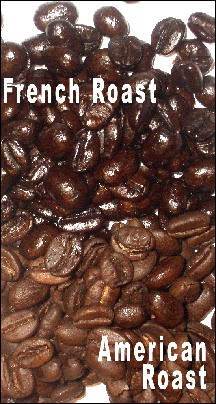I met a fellow blogger (Elisha) recently that has some of the same passions I have, well I didn’t really meet her, she lives in California and live in Indiana. So I don’t think we will be going for coffee any time soon, but maybe we can drink some at the same time and have an internet girls coffee night. Any way she loves the idea of cooking with coffee and likes to experiment with combining them to create something wonderful and unique. She found my Chocolate Cookie recipe during an internet search, she loved it so much she contacted me to see if she could post it on her blog. I told her, well of course, just give me credit for this wonderful creation and all the profits for the mega company she could start in California just from this cookie alone. Kidding about the mega company part. Elisha shared several cookies that night with friends under the stars in LA, read what she has to say at her Hands Down article. Don’t stop there, read the whole blog, it is good.
We agree that the cookies need to have a rich, full body coffee in them and we both used a Kenyan coffee.
On with what I wanted to share with you. Elisha has started a really cool blog. It is call The Caffeinated Culinarian. She has started collect recipes that use coffee and tea, that is where the caffeine comes into play. She has an Earl Grey Shortbread Cookies I would love to try, even though it doesn’t include chocolate.
Last weeks coffee cooking experiment. We had friends over to try one of our new coffee experiments, a marinate made with coffee. We put chicken breast, pork tenderloin and beef in the marinate for 24 hours and then grilled it. Everyone thought the chicken and pork was great, the beef was just ok. We are still working on the recipe. We will post it when we are happy with what we have created.
Today’s coffee cooking experiment. I took a chocolate chip muffin mix, I don’t usually use box mixes but I was in a hurry, I replaced the water for a cup of strong brewed Mocha Java, added a few white chocolate chips for looks, 2 tablespoons of flaxseed meal to pretend the muffins are healthy, put it in paper lined muffin tins and sprinkled a few almond slices on top before baking. Baked them per the box instructions. When they where done I sprinkled them with a little powdered sugar. I will serve them to some late night guess that are coming in from Chicago. If they think I work hard on the muffins, I will let them. Did you notice, chocolate and coffee, it is not dessert to me if it doesn’t have chocolate.
If you have a coffee cooking experiment you would like to share, I am sure other would like to read it. Send it to me.
Do you want to learn more about coffee? You might like to read, The French Roast Coffee Conspiracy, Parts 1-3.






 We have been experimenting with a
We have been experimenting with a  In
In 